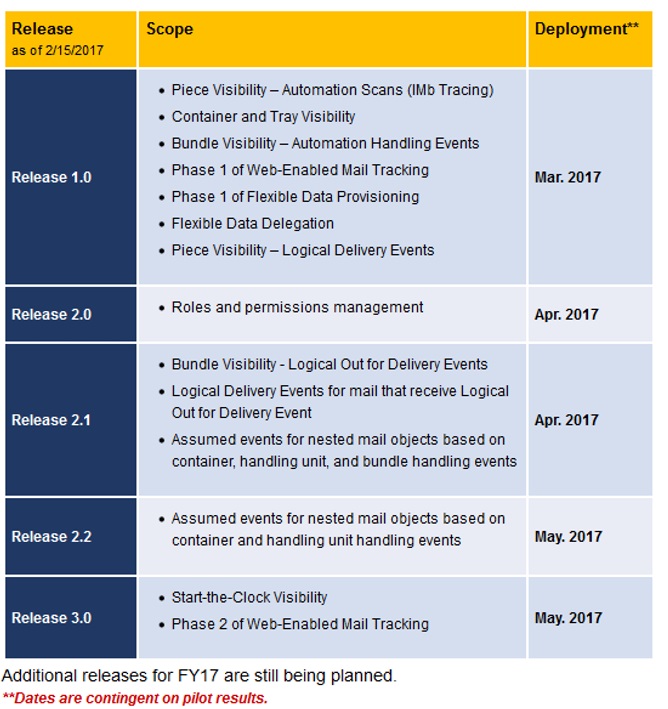The United States Postal Service (USPS) is introducing Informed Visibility (IV) to provide the mailing industry with more powerful insight into the USPS mailstream. This new program is designed to provide a one-stop shop for mail tracking data, consolidated into one system, as opposed to tracking the data via IMb Tracing and PostalOne!. The key to the success of this new program is the near real-time expanded visibility into mailings as the mail moves through the mailstream, which is much more powerful than the tracking data that exists today, which can sometimes be delayed. Another benefit is a user-friendly data provisioning and data delegation, so it is much easier for mailers to specify what data they want, when they want it, and who receives the data. The result is increased value of the mail, enabling mailers to better plan mailing campaigns and resources.
How It Works
Up to this point, mailers who receive mail tracking data can only track individual letters, flats, bundles, handling units and containers as they are scanned. Mailers then rely on pulling data into their own systems and associating electronic documentation that describes nesting associations in order to infer the tracking, status or location of the nested mail. Informed visibility leverages these nesting associations to create assumed handling events for nested mail whenever the mail aggregate containing the nested mail is scanned. In addition, IV will leverage GPS tracking information from carrier hand-held scanners to create what are termed “logical delivery events.” This can give mailers more insight into when mail is delivered even without the need for a physical scan. These logical delivery events help fill in current visibility gaps.
So, exactly how does this work? As mail is processed throughout the mailstream, the Intelligent Mail barcodes on the containers (e.g. pallets), handling units (e.g. trays, sacks) and mailpieces are scanned on Mail Processing Equipment (MPE). These scans include codes, indicating the type of machine on which the mail is processed, and an “operation code.” These operation codes identify the specific sortation process being performed on the MPE. The operation codes are grouped into processing “phases” which indicate how far along in the mailstream the mail has advanced. For example, Phases 0 and 1 identify the processes occurring at the originating point, or soon after the mail has been inducted by the mailer into the USPS mailstream. Phases 2 and 3 are destinating processes, which occur closer to the point of delivery. Phase 4 is the new logical delivery event, implying that the mail has completed all processing steps and is out for final delivery.
Handling Change
The current IMb Tracing Mail Tracking & Reporting application will be retired once the migration to IV has been completed. Mailers currently participating in IMb Tracing will be migrated gradually. The USPS has a dedicated web page for IV, including the migration roadmap. The USPS is communicating with participating customers regarding the migration process.

Source: https://ribbs.usps.gov/index.cfm?page=informed_visibility
Resources
The Informed Visibility web page on the USPS RIBBS web site (https://ribbs.usps.gov/index.cfm?page=informed_visibility) and PostalPro web site (http://postalpro.usps.com/visibility-and-tracking/informed-visibility-iv) contains more detailed information. Included on the web page is an overview document, as well as more technical specifications and guides.
With over 20+ years of innovative Postal solutions that make using the Postal service easier and more profitable for mailers and shippers, Jeff Peoples has done presentations at industry events, GraphExpo, MAILCOM, the National Postal Forum, Postal Customer Council meetings, Harvard Business Expert Forum and other industry and direct marketing events.
















